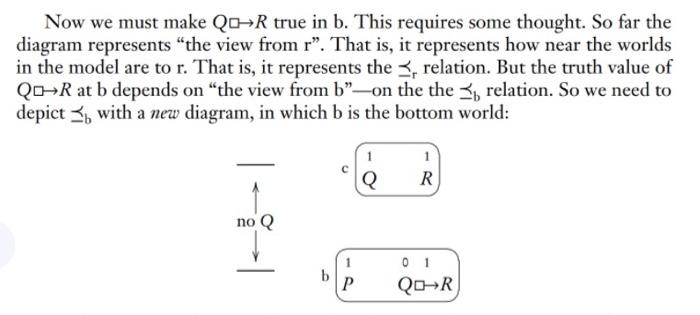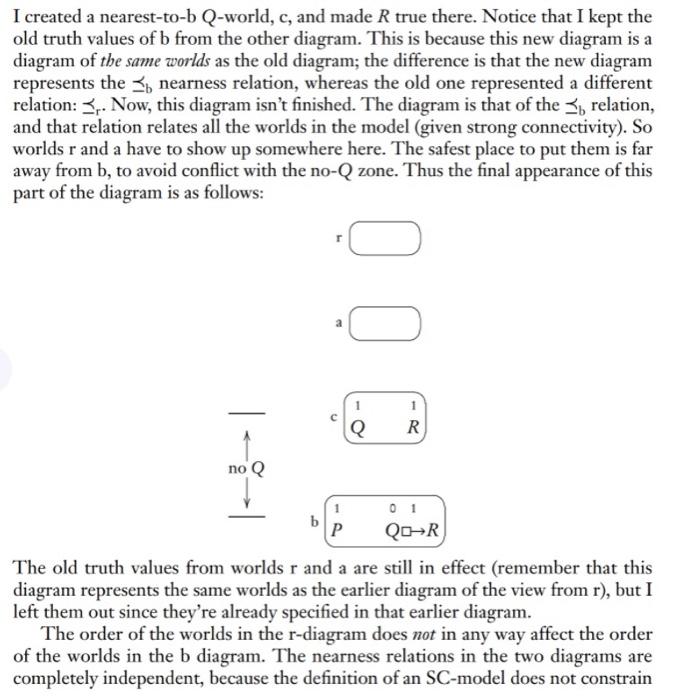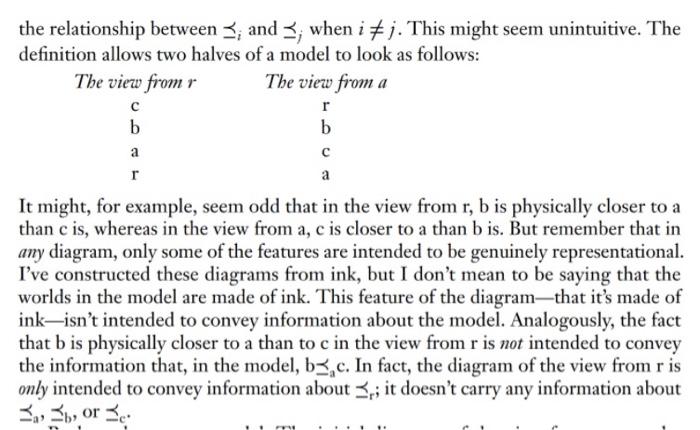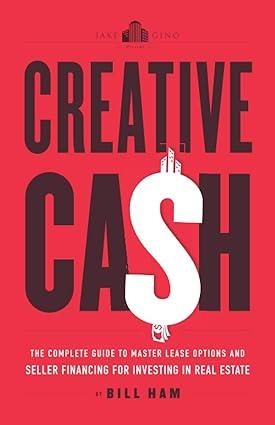8.4 ab

Exercise 8.4 Determine whether the following wffs are SC-valid or invalid. Give a falsifying model for every invalid wff, and a semantic validity proof for every valid wff. (a) OP-[~(P0-~Q)-(POQ)] (b) [PO_(Q-R)][(PAQ O-R] (c) (PO-~Q) V[((PAQ O-R)+(Po_(QR))] Example 8.6: Show that [Po~(Qo-R)][(PAQ)0R] is SC-invalid. The an- tecedent contains a nested counterfactual, which, as we'll see, calls for something new. We begin our countermodel by making the formula false in r, which means making the antecedent true and the consequent false. Since the consequent is a false counterfactual, we're forced to create a nearest PAQ world in which R is false: PAQ 0 R no PAQ 0 [PO-(QoR)]=[(PAQ)o-R] Next we must make Po-(Qo-R) true. We can't make it vacuously true, because we've already got a P-world in the model: a. So we've got to create a nearest-to-r P-world. Could it be farther away than a? No, because a would be a closer P-world. Could it be a? No, because we've got to make Qo-R true in the closest P-world, and since Q is true but R is false in a, Qo-R is already false in a. So, we do it as follows: PAQ R 1 no PAQ QC-R no p 0 1 [Pc(QC-R)][(PAQ)C-R] (I made Q false in b because b is in the no-PAQ zone and P is true in b.) Now we must make QC-R true in b. This requires some thought. So far the diagram represents "the view from r". That is, it represents how near the worlds in the model are to r. That is, it represents the relation. But the truth value of Qo-R at b depends on the view from bon the the relation. So we need to depict with a new diagram, in which b is the bottom world: 1 R Q no Q b 0 1 Qo-R I created a nearest-to-b Q-world, c, and made R true there. Notice that I kept the old truth values of b from the other diagram. This is because this new diagram is a diagram of the same worlds as the old diagram; the difference is that the new diagram represents the 31 nearness relation, whereas the old one represented a different relation: 3. Now, this diagram isn't finished. The diagram is that of the 31 relation, and that relation relates all the worlds in the model (given strong connectivity). So worlds r and a have to show up somewhere here. The safest place to put them is far away from b, to avoid conflict with the no-Q zone. Thus the final appearance of this part of the diagram is as follows: DO 1 Q R b 1 P QOR The old truth values from worlds r and a are still in effect (remember that this diagram represents the same worlds as the earlier diagram of the view from r), but I left them out since they're already specified in that earlier diagram. The order of the worlds in the r-diagram does not in any way affect the order of the worlds in the b diagram. The nearness relations in the two diagrams are completely independent, because the definition of an SC-model does not constrain the relationship between >, and 3, when i #j. This might seem unintuitive. The definition allows two halves of a model to look as follows: The view from r The view from a r b b a r It might, for example, seem odd that in the view from r, b is physically closer to a than c is, whereas in the view from a, c is closer to a than b is. But remember that in any diagram, only some of the features are intended to be genuinely representational. I've constructed these diagrams from ink, but I don't mean to be saying that the worlds in the model are made of ink. This feature of the diagramthat it's made of inkisn't intended to convey information about the model. Analogously, the fact that b is physically closer to a than to c in the view from r is not intended to convey the information that, in the model, b, and 3, when i #j. This might seem unintuitive. The definition allows two halves of a model to look as follows: The view from r The view from a r b b a r It might, for example, seem odd that in the view from r, b is physically closer to a than c is, whereas in the view from a, c is closer to a than b is. But remember that in any diagram, only some of the features are intended to be genuinely representational. I've constructed these diagrams from ink, but I don't mean to be saying that the worlds in the model are made of ink. This feature of the diagramthat it's made of inkisn't intended to convey information about the model. Analogously, the fact that b is physically closer to a than to c in the view from r is not intended to convey the information that, in the model, b













